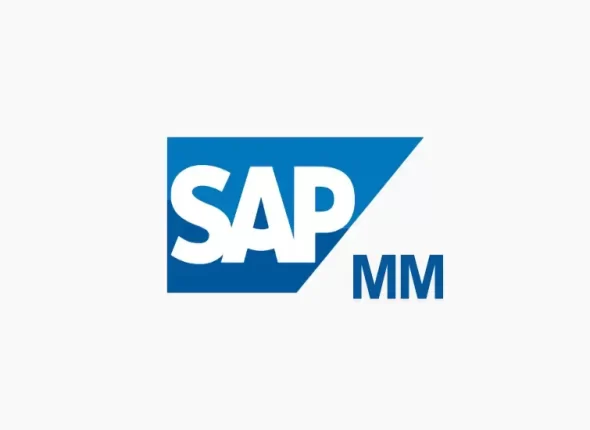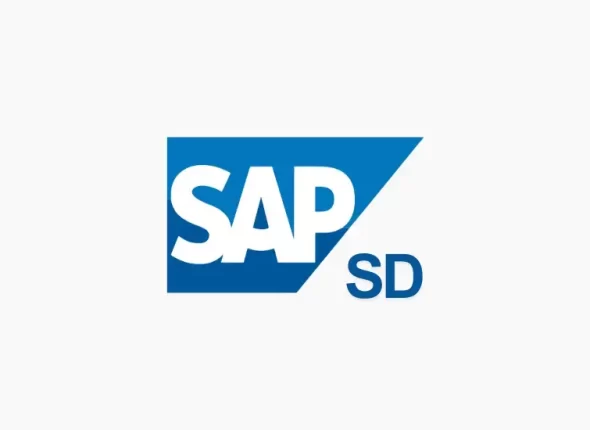Course description
Data science is an interdisciplinary field that uses scientific methods, processes, algorithms, and systems to extract knowledge and insights from structured and unstructured data. It combines principles from statistics, computer science, and domain expertise to analyze and interpret complex data sets, driving decision-making and innovation across various industries.
Key Components
Data Collection and Acquisition
- Sources: Data can be collected from a variety of sources, including databases, web scraping, sensors, and public datasets.
- Tools: Technologies like SQL, Apache Hadoop, and Apache Spark are commonly used for collecting and managing large volumes of data.
Data Cleaning and Preparation
- Data Cleaning: Involves identifying and correcting errors, dealing with missing values, and removing duplicates to ensure data quality.
- Data Transformation: Converting raw data into a suitable format for analysis, often using tools like Pandas in Python or dplyr in R.
Data Analysis and Exploration
-Exploratory Data Analysis (EDA): Techniques such as statistical summaries, data visualization, and correlation analysis are used to understand the underlying patterns and relationships in the data.
-Tools: Python libraries like Matplotlib, Seaborn, and Plotly, and R libraries like ggplot2, are popular for data visualization.
Statistical and Machine Learning Modeling
-Statistical Analysis: Methods like hypothesis testing, regression analysis, and time series analysis help in understanding data trends and making predictions.
-Machine Learning: Algorithms such as linear regression, decision trees, clustering, and neural networks are employed to build predictive models.
-Tools: Popular tools include Python libraries like Scikit-Learn, TensorFlow, and PyTorch, and R libraries like caret and randomForest.
Model Evaluation and Interpretation
-Evaluation Metrics: Metrics such as accuracy, precision, recall, F1-score, and ROC-AUC are used to evaluate model performance.
-Interpretability: Understanding and explaining model results, using techniques like SHAP (SHapley Additive exPlanations) and LIME (Local Interpretable Model-agnostic Explanations).
Deployment and Operationalization
-Deployment: Integrating machine learning models into production systems to make real-time or batch predictions.
-Tools: Technologies like Docker for containerization, Flask or Django for web services, and cloud platforms like AWS, Google Cloud, and Azure for scalable deployment.
Applications of Data Science
Business Intelligence and Analytics
Helping organizations make data-driven decisions through dashboards, reporting, and predictive analytics.
Healthcare
Improving patient outcomes through predictive modeling, personalized medicine, and bioinformatics.
Finance
Enhancing risk management, fraud detection, and algorithmic trading.
Marketing and Sales
Optimizing marketing campaigns, customer segmentation, and sales forecasting.
E-commerce
Personalizing customer experiences, optimizing inventory, and recommendation systems.
Social Media
Analyzing user behavior, sentiment analysis, and content recommendation.
Skills and Tools
Programming Languages
Proficiency in Python and R for data manipulation, analysis, and modeling.
Statistics and Mathematics
Strong foundation in statistical methods, linear algebra, and calculus.
Data Manipulation and Analysis
Experience with libraries like Pandas, NumPy, and SciPy in Python, or data.table and tidyverse in R.
Machine Learning and AI
Knowledge of machine learning algorithms and frameworks such as Scikit-Learn, TensorFlow, Keras, and PyTorch.
Data Visualization
Skills in creating visualizations using Matplotlib, Seaborn, Plotly, or ggplot2.
Big Data Technologies
Familiarity with Hadoop, Spark, and other big data processing tools.
Database Management
Experience with SQL and NoSQL databases for data storage and retrieval.
Conclusion
Data science is a rapidly growing field that plays a crucial role in extracting actionable insights from data, driving innovation, and enhancing decision-making across various domains. By leveraging statistical analysis, machine learning, and data visualization, data scientists can uncover patterns and trends that inform strategic business decisions and technological advancements. With its interdisciplinary nature and broad range of applications, data science offers exciting opportunities for professionals looking to make a significant impact through data-driven approaches.
1. Introduction to Data Science
- What is Data Science?
- The Data Science Lifecycle
- Roles in Data Science (Data Scientist, Data Analyst, Data Engineer, etc.)
- Overview of Data Science Tools and Technologies
- Applications of Data Science in Industry
2. Introduction to Python for Data Science
- Python Basics (Variables, Data Types, Operators)
- Control Flow (If-Else, Loops)
- Functions and Modules
- Introduction to Jupyter Notebooks
- Python Libraries for Data Science: NumPy, Pandas, Matplotlib
3. Data Wrangling and Preprocessing
- Understanding Data Structures in Python (Lists, Dictionaries, DataFrames)
- Importing Data from Various Sources (CSV, Excel, Databases, APIs)
- Data Cleaning Techniques (Handling Missing Data, Duplicates, Outliers)
- Data Transformation (Normalization, Standardization, Encoding Categorical Variables)
- Merging, Joining, and Concatenating Data
- Feature Engineering (Creating New Features, Feature Selection)
4. Exploratory Data Analysis (EDA)
- Understanding the Data (Descriptive Statistics, Data Types)
- Visualizing Data Distributions (Histograms, Box Plots, Violin Plots)
- Relationships between Variables (Scatter Plots, Correlation Matrix, Pair Plots)
- Identifying Patterns and Trends in Data
- Using Pandas Profiling for Automated EDA
- Best Practices in EDA
5. Data Visualization
- Introduction to Data Visualization
- Plotting with Matplotlib and Seaborn
- Advanced Visualization Techniques (Heatmaps, Pair Plots, Facet Grids)
- Interactive Visualizations with Plotly
- Dashboards with Dash and Streamlit
- Visualization Best Practices (Choosing the Right Chart, Color Theory)
6. Introduction to Probability and Statistics
- Descriptive Statistics (Mean, Median, Mode, Variance, Standard Deviation)
- Probability Theory (Basic Probability, Conditional Probability, Bayes’ Theorem)
- Probability Distributions (Normal, Binomial, Poisson)
- Hypothesis Testing (Null and Alternative Hypotheses, p-values, t-tests)
- Confidence Intervals
- Statistical Significance and Power Analysis
7. Introduction to Machine Learning
- What is Machine Learning?
- Types of Machine Learning (Supervised, Unsupervised, Reinforcement)
- Machine Learning Workflow
- Overview of Machine Learning Algorithms
- Introduction to Scikit-Learn
- Model Evaluation Metrics (Accuracy, Precision, Recall, F1 Score, ROC Curve)
8. Supervised Learning
- Linear Regression
- Simple and Multiple Linear Regression
- Regularization (Ridge, Lasso)
- Model Evaluation and Interpretation
- Logistic Regression
- Binary and Multiclass Classification
- Model Evaluation and Interpretation
- Decision Trees and Random Forests
- Understanding Decision Trees
- Ensemble Methods (Random Forests, Bagging, Boosting)
- Support Vector Machines (SVM)
- k-Nearest Neighbors (k-NN)
- Model Tuning and Hyperparameter Optimization (Grid Search, Random Search)
- Cross-Validation Techniques
9. Unsupervised Learning
- Clustering Algorithms
- k-Means Clustering
- Hierarchical Clustering
- DBSCAN
- Dimensionality Reduction Techniques
- Principal Component Analysis (PCA)
- t-Distributed Stochastic Neighbor Embedding (t-SNE)
- Anomaly Detection Techniques
- Association Rule Learning (Apriori, FP-Growth)
- Gaussian Mixture Models (GMM)
10. Feature Engineering and Selection
- Importance of Feature Engineering
- Creating New Features (Interaction Features, Polynomial Features)
- Feature Scaling (Normalization, Standardization)
- Handling Categorical Data (One-Hot Encoding, Label Encoding)
- Feature Selection Techniques
- Filter Methods (Correlation, Chi-Square)
- Wrapper Methods (Recursive Feature Elimination)
- Embedded Methods (Lasso, Ridge)
11. Model Evaluation and Validation
- Train-Test Split
- Cross-Validation Techniques (k-Fold, Stratified k-Fold)
- Bias-Variance Tradeoff
- Overfitting and Underfitting
- Model Performance Metrics for Regression (MAE, MSE, RMSE, R-squared)
- Model Performance Metrics for Classification (Confusion Matrix, AUC-ROC)
12. Time Series Analysis
- Introduction to Time Series Data
- Decomposition of Time Series (Trend, Seasonality, Noise)
- Moving Averages and Smoothing Techniques
- Autoregressive Models (AR, MA, ARMA, ARIMA)
- Seasonality and Holt-Winters Exponential Smoothing
- Forecasting Future Values
13. Natural Language Processing (NLP)
- Introduction to NLP
- Text Preprocessing (Tokenization, Lemmatization, Stemming, Stop Words)
- Bag of Words and TF-IDF
- Sentiment Analysis
- Topic Modeling (Latent Dirichlet Allocation)
- Named Entity Recognition (NER)
- Word Embeddings (Word2Vec, GloVe)
- Introduction to Transformers and BERT
14. Deep Learning
- Introduction to Neural Networks
- Activation Functions and Backpropagation
- Deep Learning Frameworks (TensorFlow, Keras, PyTorch)
- Convolutional Neural Networks (CNNs) for Image Classification
- Recurrent Neural Networks (RNNs) and LSTMs for Sequence Data
- Transfer Learning with Pre-Trained Models
- Introduction to Generative Adversarial Networks (GANs)
15. Big Data and Distributed Computing
- Introduction to Big Data
- Overview of Hadoop and Spark
- Working with Spark for Data Processing
- Introduction to NoSQL Databases (MongoDB, Cassandra)
- Data Pipelines with Apache Kafka and Airflow
- Handling Large Datasets with Dask and Vaex
16. Data Science with Cloud Computing
- Introduction to Cloud Computing for Data Science
- Working with Cloud Platforms (AWS, Google Cloud, Azure)
- Using Cloud-Based Data Science Tools (Google Colab, AWS SageMaker)
- Deploying Machine Learning Models on the Cloud
- Serverless Data Processing with AWS Lambda
17. Data Science Ethics and Privacy
- Ethical Considerations in Data Science
- Data Privacy and Security
- Bias in Machine Learning Models
- Fairness and Accountability in AI
- Case Studies on Ethical Dilemmas in Data Science
18. Data Science Project Management
- Agile Methodologies in Data Science
- Working in Data Science Teams
- Version Control with Git and GitHub
- Documenting Data Science Projects
- Presenting Data Science Findings to Stakeholders
- Building a Data Science Portfolio
19. Capstone Projects
- End-to-End Data Science Project (from Data Collection to Deployment)
- Building a Machine Learning Model for a Real-World Problem
- Developing a Data Visualization Dashboard
- Working on a Kaggle Competition
- Collaborating on a Group Project
20. Career in Data Science
- Preparing for Data Science Interviews
- Data Science Resume and Portfolio Building
- Networking in the Data Science Community
- Continuous Learning and Staying Updated
- Certifications and Further Education Opportunities










